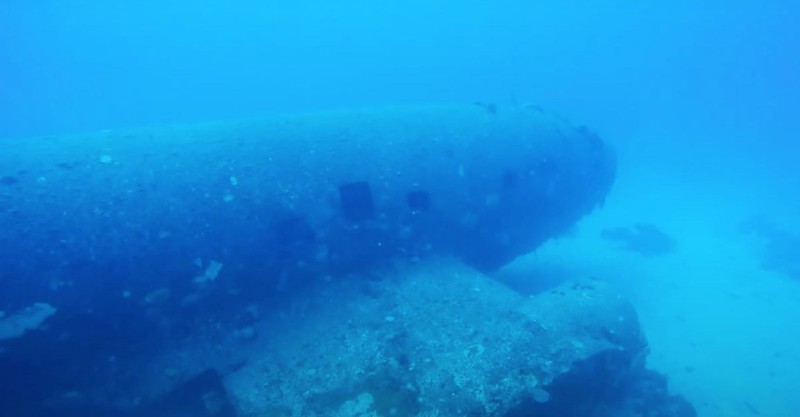Kwajalein: a huge graveyard with about 160 World War II aircraft at the bottom of the sea
During World War II, the Pacific theater of operations witnessed many air-naval combats, the remains of which rest on the bottom of the sea.
One of those combats was the Battle of Kwajalein, which owes its name to the atoll in the Marshall Islands that had been occupied by about 5,000 Japanese. Between December 31 and February 3, 1944, this Japanese contingent faced a force of more than 46,000 United States soldiers. It was an overwhelming American victory: only 153 Japanese survived. into battle.
The Kwajalein atoll lagoon holds the remains of 25 ships and some planes from both sides that fought in that battle. But that place is famous not only for those remains, but for a more curious fact. In September 1945, the United States Navy decided to get rid of about 150 planes by throwing them into the lagoon of that atoll. The reason for this decision is that once the war was over, the United States had such quantities huge pieces of military material that he didn't know what to do with. Back then you could buy a P-51 Mustang fighter for a dollar. It was cheaper to throw those planes into the sea than to transport them back to the US.
The list of unfortunate aircraft that were dumped into the sea included Chance Vought F4U Corsairs and Grumman F4F Wildcats fighters, Douglas SBD Dauntless dive bombers and strong>Curtiss SB2C Helldivers, naval bombers Grumman TBF Avengers, 11 patrol bombers North American PBJ-1 Mitchells (the naval version of the B-25) and transport aircrafts Curtiss C-46 Commandos. Because of that massive launch of aircraft into the sea, the Kwajalein atoll is one of the largest aircraft cemeteries of the Second World War, with some 160 aircraft, among those that fell there in the battle of 1944 and those that were thrown in 1945.
Dan Farnham has been posting videos of that huge underwater graveyard for a year. You can see two of those videos below. The first shows the F4F Wildcat fighters at the bottom of the atoll, and explains how those planes ended up there:
In this second video he shows a C-46 Commando and a PBJ-1 Mitchell:
You can see below some screenshots of both videos, as a preview. We start with an F4F Wildcat fighter:

Another F4F Wildcat, this one still with its wings folded, just as they were parked on carrier flight decks and hangars.

Another F4F Wildcat, this one half-buried at the bottom of the atoll. Most of the planes are about 30 meters deep.

A C-46 Commando transport plane, the great rival of the famous Douglas C-47 Skytrain.

The interior of the C-46. This is what little remains of its cockpit instrument panel.

One of 11 US Navy North American PBJ-1 Mitchell patrol bombers that were dumped on the atoll. The plane is upside down and with the bomb bay open.

|
Don't miss the news and content that interest you. Receive the free daily newsletter in your email: Click here to subscribe |
- Lo más leído
- A British fairytale ruin: the abandoned shoe house on the Isle of Wight
- The interior of the Statue of Liberty torch and the sabotage that canceled its visits
- The supermassive black hole of Phoenix A, the biggest known light-devouring monster
- A virtual tour of ancient Rome in full color, just as it was in its heyday
- The unknown Soviet female cosmonaut who died on a mission: history or hoax?
- A large collection of Volkswagen cars hidden in an abandoned mine in Switzerland
- An old Soviet military plane abandoned from 1971 on a Russian island near Alaska

 ES
ES





Opina sobre esta entrada: